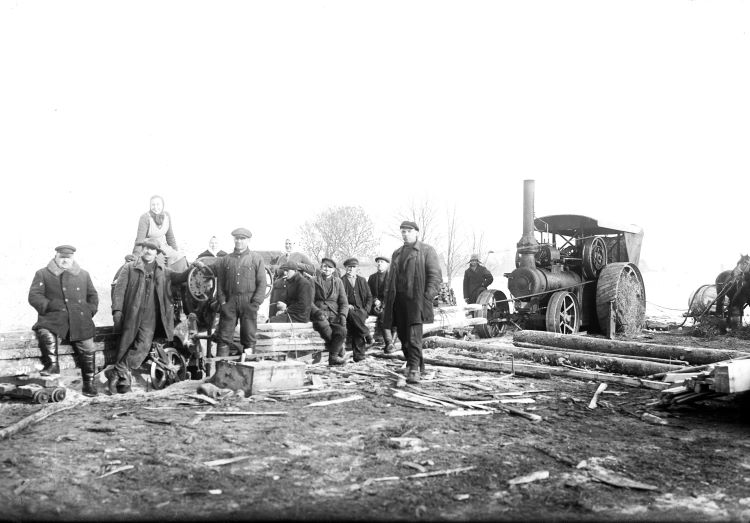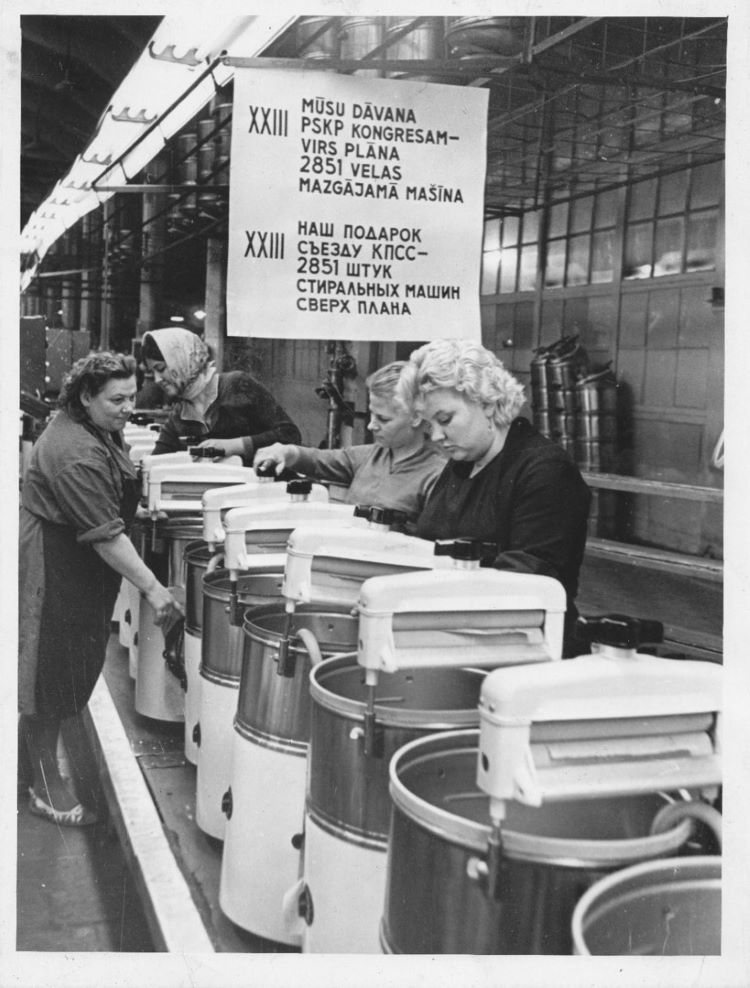About GDP
Economy and Gross Domestic Product of the Baltic States

Mobile log saw, Latvia, Lēdurga parish. Photo: Jānis Jurjāns. From the collection of Gatis Krūmiņš.
The database includes data series on employment in the Baltic States in three main sectors: industry (industry and construction); services; and agriculture (agriculture, fisheries and forestry). The database includes data series of the national GDP of the Baltic States, as well as the GDP of the regions of the Baltic States for individual years (for the interwar period and the period after the restoration of independence). GDP series are reflected in 1990; in 2011 and 2017 international dollars.
The analysis of the GDP of the Baltic States leads to the conclusion that the Baltic States have been able to successfully overcome global geopolitical and economic crises (the two world wars, the world economic crises of 1929-1932 and 2008, economic transformation after the collapse of the USSR and the restoration of independence). In the post-crisis and post-war periods, the Baltics have shown faster recovery rates than other European regions and Europe.
In the interwar period (1920-1939), the starting positions of the development of the Baltic States were different. Latvia suffered the greatest losses during the First World War (a considerable number of inhabitants and almost all industry were lost). The development of Lithuania was hampered by the loss of a significant territory (Vilnius region) and the long-term conflict with Poland, as well as a significantly lower level of education than in Latvia and Estonia. The Baltic countries overcame the financial and economic crisis of 1929-1932 relatively easier than other European countries and the USA, and Lithuania, which was effectively isolated, hardly felt the crisis. The main economic sector of all countries was agriculture, the number of people employed in industry grew relatively faster in Latvia, however, until the occupation of the USSR, the number and proportion of people employed in industry, which was before the First World War, was not reached. The large drop in the volume of industry was caused by the export of almost all industrial equipment to Russia.
In the second half of the 1930s, Latvia's and Estonia's development rates and GDP per capita were close to Finland's level of development. In 1939, Latvia's GDP was only 10% behind Finland's. From the perspective of GDP, there is no significant impact of the change of the political system in Latvia after the coup d'état carried out by Kārlis Ulmanis and his allies on May 15, 1934. After overcoming the global economic crisis of the early 1930s, GDP per capita growth was like that of the previous decade. The events of the Second World War had the most negative impact on the Lithuanian economy.
After the end of the Second World War, the occupation regime of the USSR stimulated increases in the production rate in the Baltics. In the late 1940s and early 1950s, GDP growth was slower in Lithuania, and one of the main reasons is the significantly more intense national resistance movement than in Latvia and Estonia. Estimates obtained from the BALTIC100 project confirm rapid GDP growth up to the mid-1970s, but it is much lower than the official sources of the USSR.

Production of washing machines at the Riga Electrical Appliances Factory, 1966. Source: Latvian War Museum.
The economic development during the occupation period of the USSR must be evaluated with a significant caveat: the rapid growth of GDP did not lead to a seemingly logical, similarly rapid increase in the income and quality of life of the population, as it should be according to any economic theory that is applied to an independent country with a relatively free model of economic development. During the occupation period of the USSR, the opposite happened - there were periods of time and sectors of the economy in which growth was achieved, even at the same time lowering the quality of life of the population. This can be attributed to agriculture after the collectivization implemented in 1949. The added value obtained during the occupation of the USSR did not remain in the Baltics, a large part of industrial production took place in enterprises controlled by the centralized ministries of the USSR, and most of the turnover tax obtained from production went to the Union budget part of the USSR budget, instead of remaining in the republican budget and being used for the development of the territories of the Baltic states.
The period of occupation of the USSR can be divided into two periods: rapid GDP growth until the beginning of the 1970s, and then the subsequent stagnation until the collapse of the USSR. In 1967, the GDP per capita of the Baltics reached 88% of the European average, the GDP per capita exceeded the GDP of the countries of the socialist bloc, such as Czechoslovakia. However, in this case too, a caveat should be added that the Baltic states were closely integrated into the USSR, and a significant part of the GDP added value created in the Baltic states did not remain in the Baltics. The real quality of life of the population in the Baltics was significantly lower than in Czechoslovakia, and incomparably lower than in Western European countries. At the same time, it must be recognized that the quality of life in the Baltics was higher than in other regions of the USSR, which made the Baltics attractive in the internal migration processes of the USSR, and also allowed the USSR to develop a narrative that the Baltic states are treated in a special way and receive extensive investments from the USSR. It was not true; the Baltics had been turned into a landfill for mass production and the added value of this production flowed to other territories of the USSR.
GDP per capita in the Baltics began to decrease even before the collapse of the USSR, despite the attempts of the central government of the USSR to reform and stimulate the economy. In Latvia, the GDP per capita began to decline already in 1986. Thus, the myth that the economic recession in the early 1990s is only a consequence of the creation of independent countries is overturned, but if the USSR remained, economic growth would continue, or at least remain at the previous level. The economy of the USSR had exhausted its development opportunities, it was technologically backward and internationally uncompetitive. The low quality and high costs of the products produced in the Baltic States were the main factors that caused a sharp decline in production volumes in the early 1990s.
After the restoration of independence, the Baltic states experienced a sharp drop in GDP per capita, however, Estonia overcame this crisis significantly more successfully, because of which it strengthened its position in the leadership of the Baltic states for a long time. It was not the aim of this project to analyze the causes of this situation, but the most likely influencing factor seemed to be the faster and more determined structural reforms that had already been initiated in 1992.
For 100 years, the positions of the Baltic States have changed. Currently, Lithuania has become the leader, which was in a significantly worse position 100 years ago. On the other hand, the relatively convincing 20-30 Latvia, the leader for years, is currently showing relatively the worst results. This trend has been marked since 2009.

VEF Minox camera. Late 1930s, Latvia. From the collection of Gatis Krūmiņš.
Vidzeme University of Applied Sciences
Cesu street 4, Terbatas street 10, Valmiera, LV-4201, Latvia
CONTACTS : [email protected]


